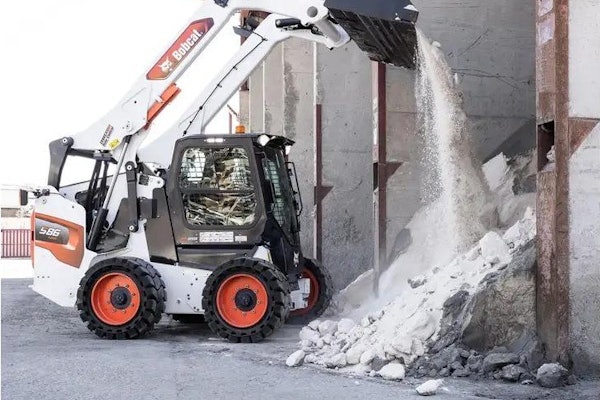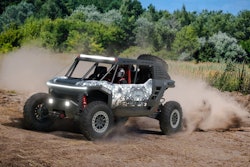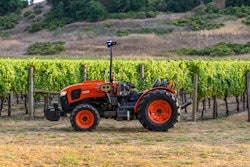When TLC contacted landscape contractors to discuss ponds, most wanted to tell us about something else first: pondless waterfalls. Waterfalls without ponds have become more popular than ponds, says Janie Morton, secretary/treasurer of Seminole Landscaping in Sanford, Florida. Close to 70 percent of the water features the company builds are pondless, compared to 10 percent to 20 percent two and a half years ago. “It seems like the trend is going toward that,” she says.
Jeff Thompson, president of Native Plant Source in Kitchener, Ontario, Canada, has seen the same shift during the past two years. Last season, more than 50 percent of the water features his firm installed lacked a pond. Allen Williams, owner of Williams Wildscapes in Pharr, Texas, says single-rock waterfalls are his hottest seller. While he hasn’t seen demand for traditional ponds fall, Williams says requests for these pondless features have increased significantly.
Why pondless?
In a word, maintenance. “I think it has to do with lifestyle,” Morton says. “People are busier. They don’t want to spend time doing maintenance. They want things that look cleaner, but give them their water feature at the same time.”
There is also the safety factor involved with having a pond young children could fall into. With pondless features, the small reservoir is typically safely tucked underground, putting owners’ minds at ease.
Thompson says his clients are most interested in features that combine the sound of running water with low maintenance. “They’re looking at it [a pond] as something they have to maintain,” Thompson says. “They’ll have to take time out of their week to get debris out of it and do chemical maintenance.”
Upfront costs are a lot less, too, making them attractive to more customers. The price range for the pondless features Williams builds is $800 to $5,000, with the average job costing the customer $2,000. The average pond, on the other hand, costs $5,000 to $10,000, and some are as much as $30,000.
Pondless waterfalls also are easier to fit in the growing number of small backyards. A pondless waterfall in a 10-foot-by-20-foot backyard doesn’t take up all the space, Williams says. Thompson says corporations have begun requesting the features as part of “contemplative gardens” where employees spend time during breaks. They can listen and watch the trickling water while surrounded by flowers and trees. “It’s quite a nice escape,” he says.
How to build them
Constructing a pondless waterfall isn’t much different from building a small, standard pond. The first step is to dig a hole. Thompson says his company places a barrel or series of pails where the pond liner would go. A pre-formed plastic reservoir or vinyl liner of any shape or size will work, Morton says. Next, they place a mesh grate over the liner, then cover it with rocks. Thompson places lids with holes in them on the barrels or pails, covers the lids with filter fabric and puts river cobble over that. He selects larger stones to use in the waterfall structure. Thompson says his company’s waterfalls vary from 1 to 7 feet tall. The height of the waterfall should correspond to the contour of the property and the height of surrounding plantings so it will blend with the landscape and look natural. All-in-one pump and filter kits will circulate the water from the reservoir to the top of the stone structure, Morton says. When water reaches the ground, it filters back into the reservoir.
If you’re constructing a single-stone waterfall, careful selection of the boulder is critical, Williams says. You have to imagine how the water will flow over and run down the stone and consider the angle at which you’ll bore through the rock in order to pipe water to the top of it, he says. Because Williams works in a region of southern Texas that’s internationally known for bird-watching opportunities – many species migrate through the area and it’s the northern range limit for some birds – his clients often want water features that will attract this wildlife. Divots in the stones create pools where birds can drink and bathe. The boulders he uses range from 400 to 5,000 pounds.
Native Plant Source began offering solar-power waterfalls last year, and the move nearly doubled the company’s sales, Thompson says. Customers save 30 percent on installation since there’s no need to hire an electrician to run an electrical line. Operating the pump is free, so the energy savings are ongoing, he says. Thompson custom designs the systems, matching the size of the pump to the height of the waterfall and then matching the solar cell to the pump. He says his company has installed enough of the systems now that it essentially has several packages it offers. You can set up the waterfalls to automatically turn on during the day and shut down at night or connect the solar panel to a battery that stores energy so customers can enjoy the waterfall after dark. An on/off switch allows clients to turn off the waterfall in either scenario. Thompson says the solar-power pumps perform well. “It provides a really impressive water feature,” he says. “It’s really versatile in what you can create.”
With the economy in a downturn, pondless waterfalls offer a two-fold advantage, Morton says. “People are a little more stressed, and this is a good way to relieve that stress,” she says. She has two of the features at her home and unwinds on weekends and in the evening by reading a book or drinking a glass of wine while listening to the water burble. Plus, since pondless waterfalls are relatively inexpensive, many homeowners can purchase them without feeling anxious. “You can get a lot of pleasure without having to spend a lot of money,” Morton says.





